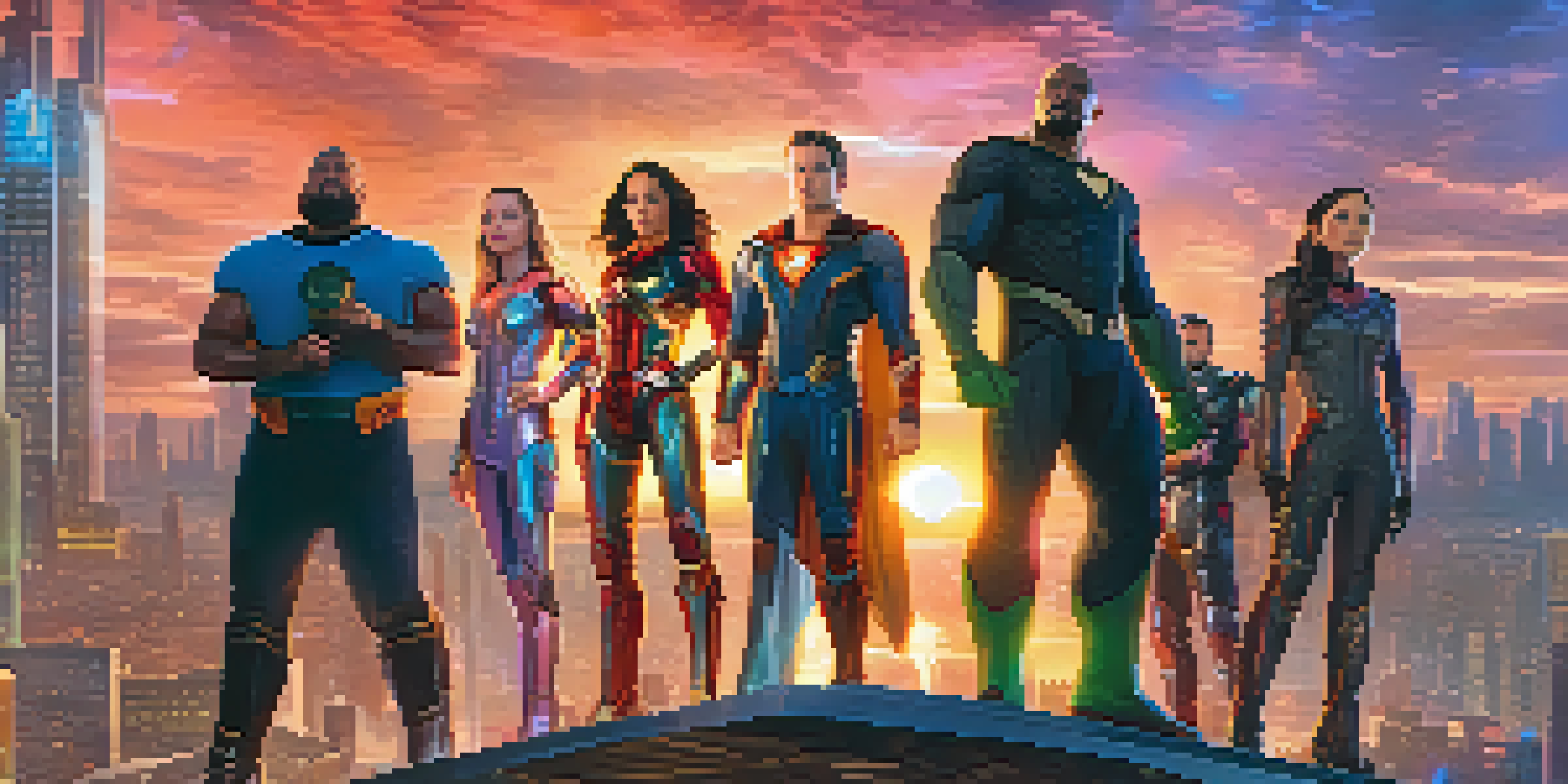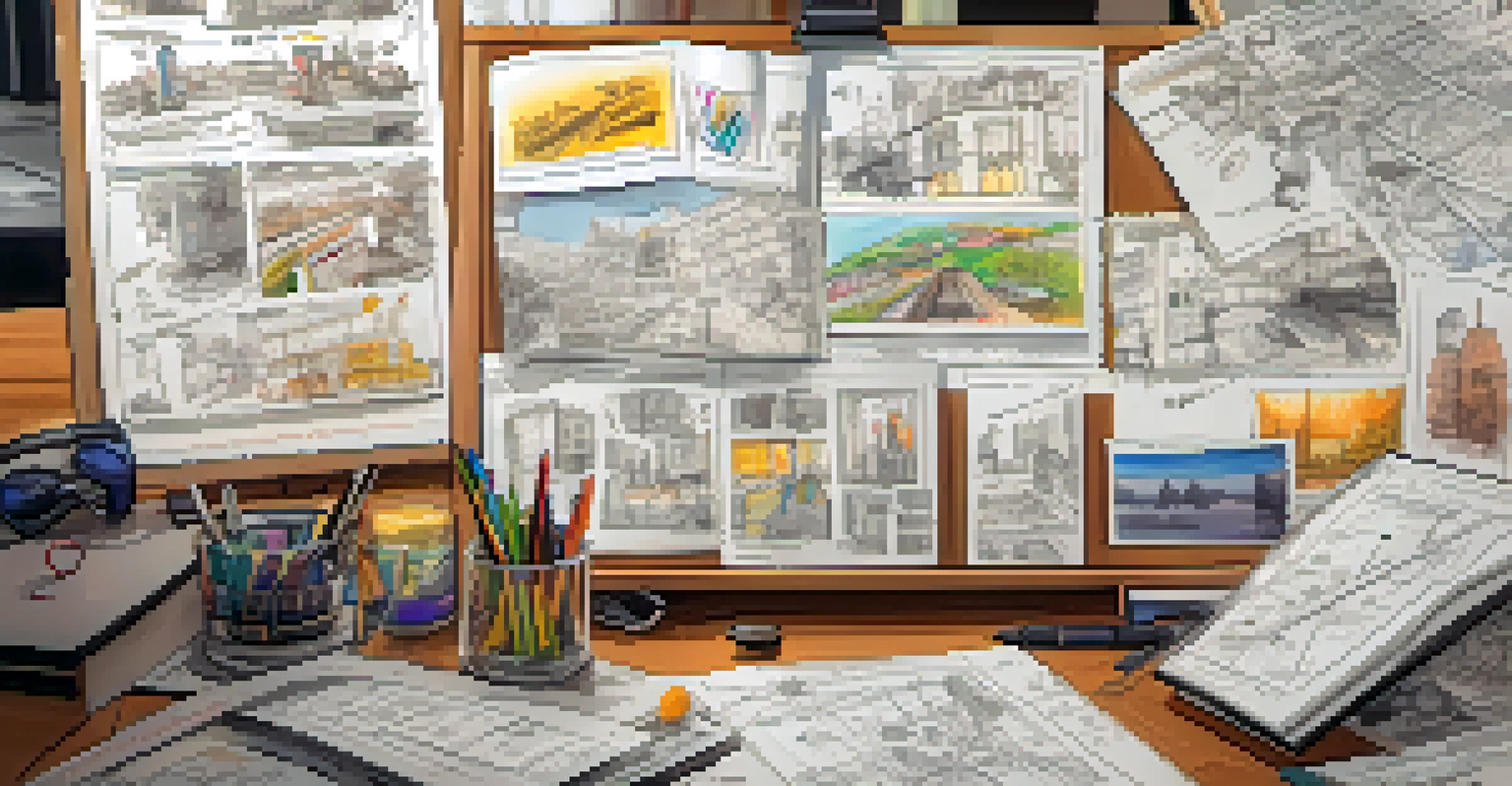Creating a Cinematic Universe: Steps and Challenges Explained

Understanding the Concept of a Cinematic Universe
A cinematic universe is a series of films or shows that share the same fictional world, characters, or storyline. Think of it like a grand tapestry, where each thread is a movie or series that contributes to a larger narrative. This interconnected storytelling allows for deeper character development and plot complexity, much like how the Marvel and DC franchises have thrived.
A cinematic universe is a series of films or shows that share the same fictional world, characters, or storyline.
The essence of a cinematic universe lies in its ability to create a shared experience for audiences. Fans enjoy the thrill of spotting Easter eggs or references to previous films, creating a sense of community around the content. This also encourages viewers to engage with multiple installments, increasing ticket sales and viewership across the board.
However, building a cinematic universe is no small feat. It requires meticulous planning and a clear vision to ensure that each piece fits seamlessly into the larger puzzle. Without this cohesion, the entire concept can unravel, leaving audiences confused and disconnected.
Crafting a Strong Central Narrative
At the heart of any successful cinematic universe is a strong central narrative that will guide all subsequent stories. This overarching plot serves as a roadmap, helping creators maintain consistency and direction throughout their films or series. For example, the Infinity Saga in the Marvel Cinematic Universe (MCU) showcased a compelling story that spanned over a decade, captivating audiences worldwide.

To craft this narrative, it's essential to identify key themes and character arcs that resonate with viewers. The narrative should be flexible enough to allow for spin-offs and side stories while remaining anchored to the core premise. This balance is crucial for maintaining audience interest and loyalty.
Creating a Cohesive Narrative
A strong central narrative is essential for guiding the interconnected stories within a cinematic universe.
Moreover, this central narrative should be adaptable to changes based on audience feedback and cultural shifts. For instance, if a character becomes unexpectedly popular, writers might choose to expand their storyline, further enriching the universe and keeping it dynamic.
Developing Rich, Interconnected Characters
Characters are the lifeblood of any cinematic universe, and developing them requires careful thought and creativity. Each character should have distinct traits, motivations, and arcs that contribute to the overall narrative. Take Iron Man, for example; his journey from a self-centered billionaire to a selfless hero is not just compelling but also pivotal to the MCU's success.
Engaging with fans is an integral part of building a successful cinematic universe.
It's also important for these characters to have connections with one another, enhancing the universe's depth. Relationships—be they friendships, rivalries, or family ties—can serve as the glue that holds the narrative together. When characters cross paths, it creates exciting moments for the audience and enriches the story.
However, balancing character development with the larger narrative can be challenging. Writers must ensure that individual stories enhance the universe rather than detract from it. Each character’s journey should feel significant while still aligning with the overarching plot.
Establishing a Unique Visual and Thematic Style
A cinematic universe should have a distinct visual and thematic style that sets it apart from others. This can include specific color palettes, cinematography techniques, or recurring motifs that create a recognizable brand. For instance, the dark and gritty aesthetic of the DC Extended Universe (DCEU) contrasts sharply with the vibrant and playful tone of the MCU.
These stylistic choices not only enhance storytelling but also create a cohesive viewing experience. When audiences see a consistent style, they immediately associate it with the universe, fostering brand loyalty. This is similar to how a signature dish can establish a restaurant’s identity.
Character Development Matters
Rich, interconnected characters enhance the storytelling and engage audiences throughout the cinematic universe.
However, maintaining a unique style can be challenging, especially as new directors and creative teams come on board. It’s vital to strike a balance between innovation and consistency, ensuring that new installments feel fresh while still honoring the established aesthetic.
Planning for Future Installments and Spin-offs
One of the most exciting aspects of a cinematic universe is the potential for future installments and spin-offs. Creators need to plan ahead, establishing storylines and characters that can be explored in greater depth later on. This foresight allows for a rich tapestry of interconnected stories that keep audiences coming back for more.
When considering spin-offs, it's essential to gauge audience interest and potential character popularity. For example, the success of the 'WandaVision' series emerged from the strong fan base of Wanda Maximoff, showcasing how a well-loved character can lead to successful side stories.
However, the challenge lies in ensuring that spin-offs contribute to the larger narrative rather than feeling like mere cash grabs. Each new installment should enhance the universe and provide meaningful context for viewers, maintaining their investment in the overarching story.
Navigating the Challenges of Continuity and Canon
Continuity is crucial in a cinematic universe, as inconsistencies can frustrate audiences and undermine the story. Writers must keep track of timelines, character developments, and plot points to ensure everything aligns. This can feel like solving a massive puzzle, where one misplaced piece can cause the entire picture to falter.
Establishing a clear canon—that is, the accepted storyline and characters—is essential for maintaining this continuity. Fans become deeply invested in the universe, and any discrepancies can lead to backlash, as seen with certain controversial plot points in established franchises.
Engaging Fans Builds Community
Active engagement with fans fosters a sense of community and investment in the cinematic universe.
However, it’s also important to remain flexible. As new stories are developed and audience preferences evolve, there may be a need to adjust or reinterpret certain elements. Striking a balance between maintaining continuity and allowing for creative freedom is one of the biggest challenges faced by creators.
Engaging with Fans and Building a Community
Engaging with fans is an integral part of building a successful cinematic universe. The more creators connect with their audience, the more invested viewers become in the story. This can be achieved through social media interactions, fan events, and behind-the-scenes content that fosters a sense of community.
When fans feel included in the creative process, they are more likely to support the franchise and spread the word. This can create a ripple effect, where positive buzz helps draw in new viewers. For example, the MCU has cultivated a dedicated fan base that eagerly anticipates each new release.

However, balancing fan expectations with creative vision can be tricky. While it’s important to listen to feedback, creators must also stay true to their artistic intent. Finding this equilibrium is essential for maintaining authenticity while also honoring the fans who support the cinematic universe.